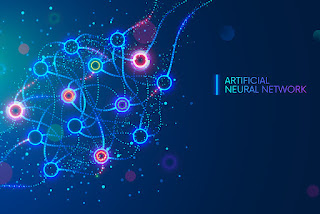How Neural Networks Are Decoding Coffee Sales Patterns
In the specialty coffee business, your gut instinct might tell you when to stock up on light roasts or when to push that new single-origin Ethiopian. But what if your point-of-sale system could predict these decisions with uncanny accuracy weeks before you'd even notice a trend forming?
This isn't science fiction it's the quiet revolution happening in coffee shops that have embraced neural networks for sales pattern recognition.
When Spreadsheets Fall Short
Traditional sales analysis can tell you what happened yesterday. But in today's rapidly shifting coffee market, yesterday's insights are often too late. Between seasonal shifts, social media trends, changing work patterns, and evolving taste preferences, coffee shop owners are dealing with more variables than ever.
"I used to spend Sunday nights pouring over Excel sheets trying to make sense of our weekly patterns," says Miguel Cortez, owner of Third Culture Coffee in Seattle. "But by the time I spotted a trend, it was usually already fading."
Enter Neural Networks
Unlike conventional analytics, neural networks a sophisticated form of artificial intelligence don't just track linear relationships between a few variables. They identify complex, multi-dimensional patterns across thousands of data points simultaneously.
For coffee shops, this means these systems can detect subtle correlations between seemingly unrelated factors:
- How Monday's weather affects Friday's sales mix
- Which drink combinations predict future purchasing behavior
- How menu positioning influences experimentation
- The ripple effects when a regular customer changes their usual order
Four Ways Neural Networks Are Transforming Coffee Retail
1. Demand Forecasting That Actually Works
Neural networks have slashed inventory waste by 22-35% across several coffee chains by predicting daily demand patterns with remarkable precision. The systems account for dozens of factors from local events to weather patterns to social media sentiment creating a dynamic forecast that updates in real-time.
"We've cut our milk waste nearly in half," reports Leila Ahmad of Cornerstone Coffee in Austin. "The system recognized patterns we never would have spotted like how a rainy Tuesday impacts milk consumption three days later."
2. Identifying 'Gateway' Products
One of the most valuable insights neural networks have revealed is the concept of "gateway drinks" specific menu items that reliably predict a customer's future purchasing journey.
At Portland's Theorem Coffee, their neural network identified that customers who order a honey lavender latte as one of their first three purchases are 78% more likely to become regular patrons and 62% more likely to eventually explore their reserve bean offerings.
"We completely reorganized our menu based on these insights," says owner Jackson Chen. "We now strategically position these gateway drinks to attract the type of customer base we're trying to build."
3. Pricing Elasticity Mapping
Neural networks excel at identifying non-obvious price sensitivity patterns that vary by:
- Day of week
- Time of day
- Weather conditions
- Customer type
- Complementary purchases
One Bay Area coffee chain discovered they could increase prices on specialty drinks by 8% on Tuesday mornings with zero impact on sales, while a 3% increase on Fridays caused a significant drop in volume.
4. Supply Chain Optimization
For coffee shops sourcing directly from farms or small-batch roasters, timing is everything. Neural networks are now helping predict optimal ordering patterns by analyzing:
- Seasonal quality variations from specific regions
- Price fluctuation patterns in specialty markets
- Changes in customer preference that signal upcoming demand shifts
- Optimal roast-to-serve windows for maximum freshness
Real-World Results: Sunrise Coffee
When Sunrise Coffee implemented a neural network system in their three Denver locations, they experienced:
- 27% reduction in weekly food waste
- 18% increase in average ticket size through better upselling predictions
- 34% improvement in staffing efficiency by precisely forecasting busy periods
- $37,000 annual savings in inventory carrying costs
Most importantly, they achieved this without massive upfront investment.
"We're an independent business competing with chains that have huge data science teams," notes co-owner Elena Rodriguez. "This technology levels the playing field."
The Human Element Remains Essential
Despite its power, neural network technology isn't replacing barista expertise it's amplifying it.
"The system doesn't tell us what to do," Rodriguez emphasizes. "It reveals patterns we wouldn't otherwise see, then we decide how to act on those insights."
The most successful implementations combine the pattern-recognition power of neural networks with the human understanding of community, craft, and connection that defines great coffee shops.
Getting Started Without a Data Science Degree
You don't need to understand the mathematical intricacies of neural networks to benefit from them. Several coffee-specific software providers now offer accessible solutions that integrate with common POS systems.
The entry point is simply good data hygiene:
- Consistent inventory tracking
- Accurate sales reporting
- Detailed customer information when available
- Integration with local event and weather data
The Bottom Line
For coffee shop owners, neural networks aren't just another tech buzzword they're quickly becoming an essential competitive advantage in a challenging market. The businesses that thrive will be those that leverage these deep insights to anticipate customer needs, optimize operations, and create experiences that keep people coming back.
In an industry built on craftsmanship and community, neural networks aren't replacing the human touch they're giving it unprecedented precision.



Comments
Post a Comment